Why Pack Binoculars For Travel?
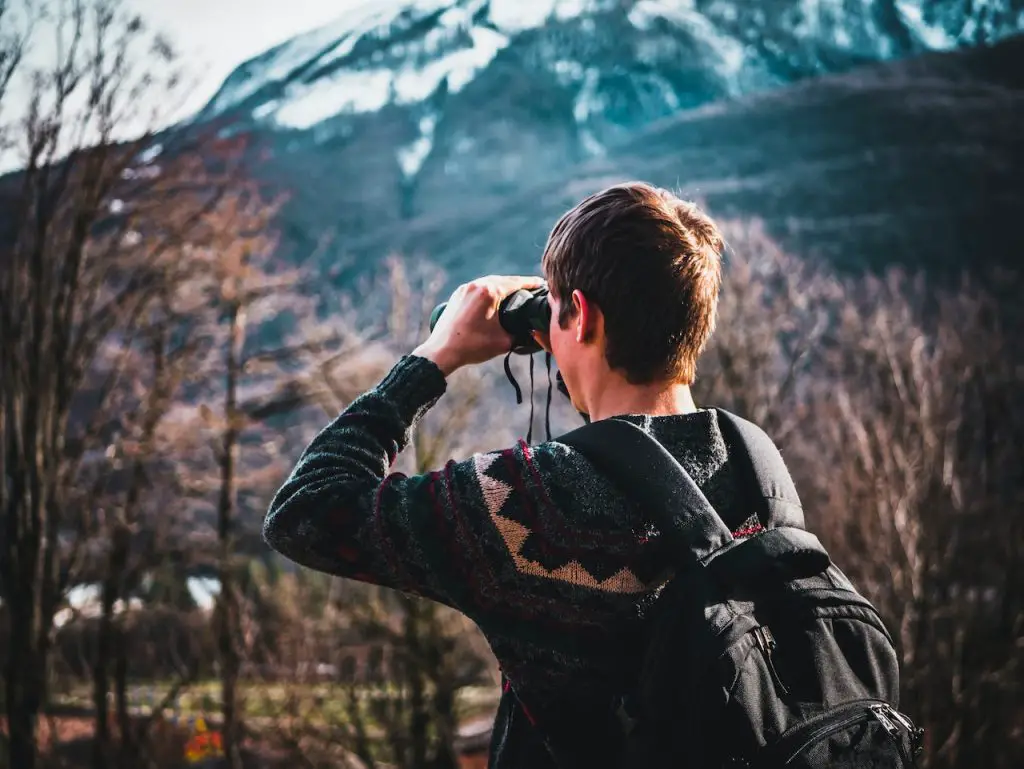
While journeying through the wild, the animals you wish to see won’t always be close.
By having a pair of binoculars at your side, you’ll experience more from having a really good close-up look than you would’ve with the naked eye.
Although camera lenses are becoming more sophisticated each day, they still only provide a partial view of what you’d like to see. You need to be looking with both eyes, especially when tracking moving subjects.
In this article, we’ll see how binoculars can enhance your travel encounters.
Additionally, we’ll provide you with practical tips for selecting the perfect binoculars, ensuring their protection, and using them effectively to make your journey unforgettable.
Let’s start and see how these instruments make your travel magical and exciting.
1. Wildlife and Birdwatching
One of the most captivating experiences during any journey is observing wildlife in its natural habitat.
Binoculars play a vital role in enhancing this aspect of travel, allowing you to get up close and personal with a diverse range of fauna without disturbing their natural behavior.
Whether you’re exploring lush rainforests, vast savannahs, or tranquil national parks, binoculars open a window to a world of hidden wonders.
Observing Diverse Fauna in Natural Habitats:
With binoculars in hand, you can spot elusive animals like tigers, leopards, and elephants from a safe distance, ensuring your safety and the animals’ well-being.
Binoculars enable you to witness their interactions, hunting behavior, and tender moments without intruding on their environment.
Birdwatching Opportunities during Journeys:
For avid birdwatchers, binoculars are indispensable. From rare migratory species to vibrant local birds, binoculars help you identify the subtlest markings and plumage details.
Whether you’re exploring tropical rainforests, coastal cliffs, or picturesque lakes, these optical instruments bring the avian world to life, providing an unforgettable birdwatching experience.
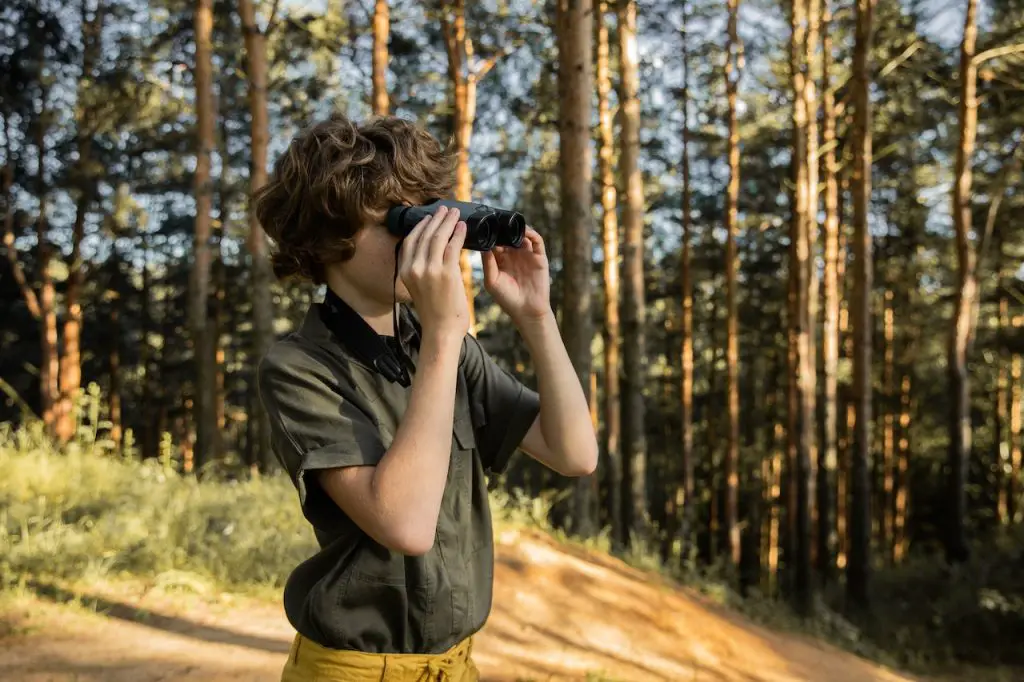
2. Scenic Views and Landscapes
Journeys often lead us to breathtaking landscapes and awe-inspiring vistas that deserve to be fully appreciated.
Binoculars allow you to take in every intricate detail of the scenery, making your travel memories even more vivid.
Appreciating Panoramic Vistas:
Whether you’re atop a towering mountain or gazing across a vast canyon, binoculars bring distant elements into focus, enhancing the grandeur of the landscape.
Every mountain peak, valley, and distant cityscape becomes a part of your visual adventure, making the scene even more captivating.
Exploring Remote and Inaccessible Areas:
In certain cases, travel may take you to remote and inaccessible regions where reaching closer to landmarks might be challenging.
Binoculars bridge this gap, allowing you to explore hidden gems and far-off landmarks with ease.
Even on a cruise or a scenic train journey, binoculars can help you discover mesmerizing sights beyond the immediate reach.
3. Cultural and Historical Exploration
Binoculars are not limited to outdoor activities; they also add value to cultural and historical exploration, making it easier to appreciate architectural marvels and historical landmarks from afar.
Studying Architecture and Artifacts from a Distance:
When visiting historic sites or ancient ruins, binoculars enable you to observe intricate carvings, architectural details, and ornate decorations that might be difficult to perceive with the naked eye.
This enhances your understanding and appreciation of the cultural significance of these monuments.
Enhancing Museum and Monument Visits:
Inside museums and galleries, binoculars can be used to admire intricate artwork and artifacts displayed at a distance.
Instead of crowding around exhibits, binoculars provide a more personal and in-depth view, allowing you to immerse yourself fully in the artistic and historical heritage.
4. Sporting Events and Activities
For sports enthusiasts and adventure seekers, binoculars enhance the thrill of witnessing live events and capturing action shots during adventure activities.
Getting a Close-Up View at Stadiums and Arenas:
At sports stadiums and arenas, binoculars bring you right into the heart of the action, regardless of your seating position.
Whether it’s a football match, a baseball game, or a motorsport event, binoculars allow you to enjoy the excitement and energy of the event up close.
Capturing Action Shots during Adventure Sports:
If your journey involves adrenaline-pumping activities like rock climbing, whitewater rafting, or safari tours, binoculars can also double as a handy tool for capturing action shots from a distance.
You can photograph wildlife, fellow adventurers, or friends and family in action without interrupting the moment.
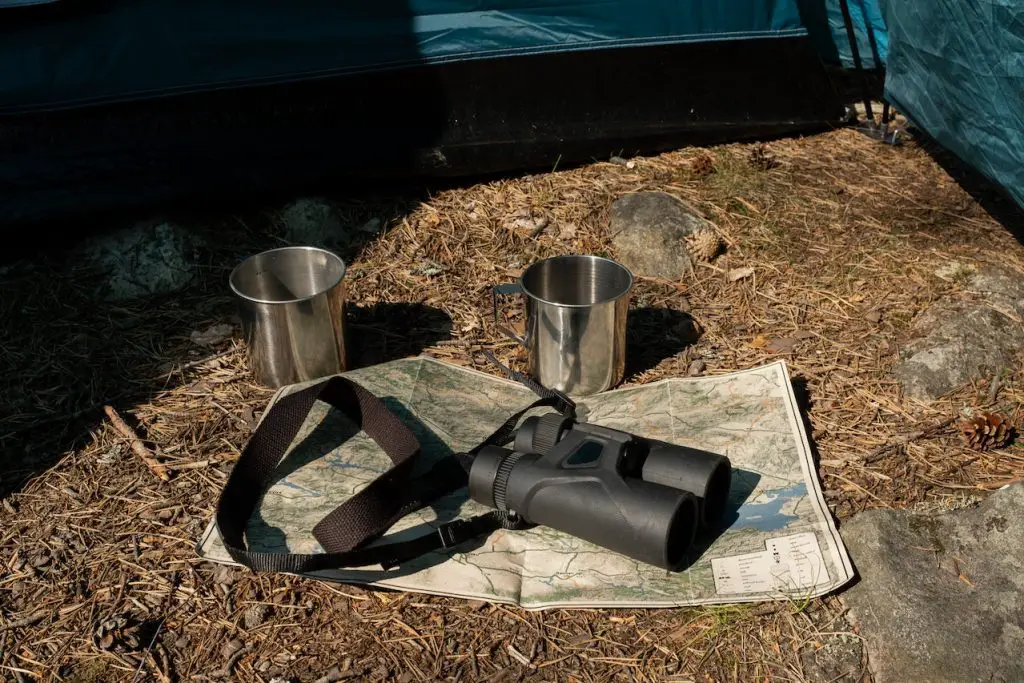
5. Binoculars for Safety and Preparedness
While on a journey, especially in unfamiliar territories or wilderness areas, safety and preparedness become paramount.
Binoculars, besides their role in enhancing the travel experience, also serve as valuable tools for navigation and route planning.
Using Binoculars for Orientation and Route Planning:
Binoculars can aid travelers in studying the terrain ahead, identifying landmarks, and planning the best routes.
From a vantage point, you can scout the surroundings, locate trails, and evaluate potential obstacles. This helps you make informed decisions and ensures a smoother and safer journey.
Identifying Landmarks and Points of Interest:
While navigating through new landscapes, identifying prominent landmarks can provide reassurance that you’re on the right path.
Binoculars enable you to spot recognizable features from a distance, such as distinctive mountain peaks, river bends, or unique rock formations, helping you maintain your bearings and stay oriented.
6. Emergency Situations
In unforeseen circumstances or emergency situations, binoculars can be invaluable tools to assist you in seeking help or signaling for assistance.
Spotting Help or Civilization in Remote Locations:
When traveling in remote and less-populated areas, getting lost or encountering difficulties can be concerning.
Binoculars can help you spot signs of civilization, such as villages, roads, or structures, even at a distance. This information can be crucial when determining the nearest point of assistance or an exit route.
Signaling for Assistance in Distress:
In case of an emergency or being stranded in a remote location, binoculars can aid you in signaling for help.
You can use them to attract the attention of passing vehicles, aircraft, or other people in the vicinity by waving or using reflective surfaces to create flashes.
Different Types of Binoculars for Travel
Compact Binoculars:
Compact binoculars are designed with portability and convenience in mind. These are lightweight and small in size, making them ideal for travelers who prefer to pack light.
Compact binoculars are perfect for sightseeing tours, city explorations, and events where you might need to carry them around for an extended period.
They easily fit into a backpack or a pocket, ensuring you can access them whenever an exciting view presents itself.
Full-size Binoculars:
Full-size binoculars, as the name suggests, are larger and generally offer higher magnification and superior optical performance compared to compact models.
They are best suited for activities like birdwatching, wildlife observation, stargazing, and outdoor adventures where spotting distant subjects is crucial.
While they might be bulkier and heavier, full-size binoculars provide clearer and brighter images due to their larger objective lenses.
Zoom Binoculars:
Zoom binoculars combine the convenience of adjustable magnification with the portability of compact or full-size models.
These binoculars come with a variable magnification setting, allowing you to zoom in or out to get a closer or wider view of the subject.
While they offer versatility, zoom binoculars might sacrifice some optical quality, especially at higher magnification levels.
They can be suitable for travelers who want the flexibility of different magnification options in a single device.
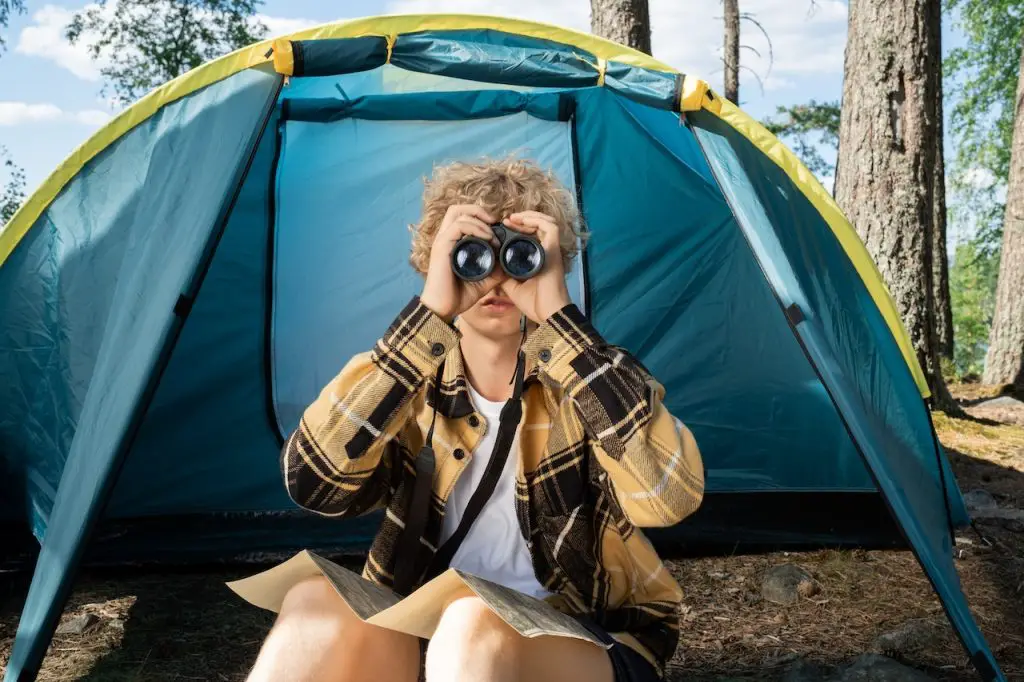
Key Features to Consider When Choosing Binoculars for Travel
When selecting binoculars for your journey, several essential features should be taken into account:
Magnification:
Opt for binoculars with an appropriate magnification level for your specific activities.
Higher magnification might seem tempting, but it can lead to shakier images and reduced field of view, making it challenging to track fast-moving subjects.
Objective Lens Diameter:
The size of the objective lenses determines the amount of light the binoculars can gather, affecting image brightness and clarity.
Larger objective lenses provide better performance in low-light conditions but may add weight and bulk to the binoculars.
Field of View (FOV):
A wider field of view allows you to see a larger area at once, making it easier to spot moving subjects or scan a landscape quickly.
Consider a wider FOV for activities like wildlife observation and sports events.
Lens Coatings:
High-quality binoculars feature lens coatings that reduce glare and improve light transmission, resulting in clearer and sharper images.
Look for binoculars with fully multi-coated lenses for optimal performance.
Waterproof and Fog-proof:
If you anticipate encountering challenging weather conditions during your travels, consider binoculars that are waterproof and filled with nitrogen to prevent fogging.
These features ensure durability and clear visibility even in adverse situations.
Focus Mechanism:
A smooth and precise focus mechanism is essential for quickly adjusting your view. Choose binoculars with a focus wheel that operates smoothly and allows for easy focusing.
Eye Relief:
For travelers who wear glasses, adequate eye relief is crucial to maintain a comfortable viewing experience.
Look for binoculars with longer eye relief to accommodate eyeglasses without losing the field of view.
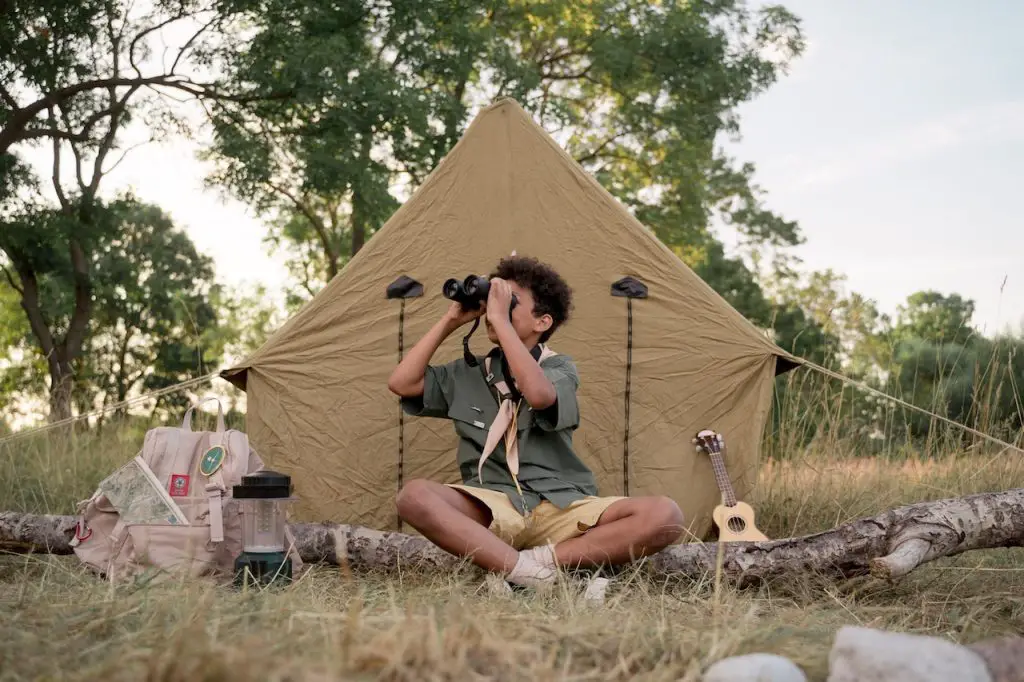
Practical Tips for Packing and Using Binoculars
Choosing the Right Binoculars for Your Trip
Selecting the right binoculars for your journey is crucial to ensuring a fulfilling and comfortable experience. Consider the following factors when making your choice:
Considering the Travel Destination and Activities:
Different travel destinations and activities demand specific types of binoculars.
For wildlife safaris, birdwatching, or outdoor adventures, full-size binoculars with higher magnification are ideal to capture distant subjects in detail.
On the other hand, if your journey involves urban explorations or sightseeing tours, compact binoculars with lower magnification will suffice, providing portability and convenience.
Balancing Performance and Portability:
While higher magnification and larger objective lenses offer superior image quality, they may add weight and bulk to your gear.
Strike a balance between performance and portability by choosing binoculars that fit comfortably in your hands and can be easily carried throughout your journey.
Protecting and Transporting Binoculars Safely
To ensure your binoculars stay in optimal condition and are ready for use whenever needed, follow these tips for protection and safe transportation:
Using Protective Cases and Pouches:
Invest in a sturdy and well-padded binocular case or pouch that provides adequate protection against impacts, dust, and moisture.
Properly fitting cases with cushioned interiors safeguard the lenses and prisms from scratches and external damage during transit.
Avoiding Damage During Travel:
Be mindful of how you handle and store your binoculars during travel. Avoid placing them in the bottom of a bag where they might get crushed by other items.
Additionally, keep them away from sharp objects and extreme temperatures, as these can compromise their performance.
Proper Techniques for Using Binoculars
To make the most of your binoculars and ensure a steady and clear view, adopt these proper techniques:
Adjusting the Focus and Diopter:
Before using binoculars, adjust the focus to match your eyesight.
Close your right eye and use the central focusing wheel to focus on a distant object using your left eye.
Then, close your left eye and adjust the diopter (usually located on the right eyepiece) until the same object appears clear through your right eye.
This ensures both eyepieces are correctly calibrated to your eyesight.
Using Tripods and Stabilization for Steady Viewing:
For extended wildlife observation or nature viewing, consider using a tripod or other stabilization equipment.
Tripods provide a stable platform, reducing hand tremors and resulting in a more steady and shake-free view. Many binoculars are tripod-adaptable, allowing you to attach them securely for prolonged use.
Additionally, when using binoculars handheld, brace your arms against your body or a stable surface to minimize shaking.
Resting your elbows on a solid surface like a railing or a rock can also help steady your view.
Conclusion
Packing and using binoculars effectively can significantly enhance your travel experiences, allowing you to enjoy the wonders of the world with greater clarity and detail.
By choosing the right binoculars for your activities, ensuring their protection and safe transportation, and adopting proper viewing techniques, you’ll make the most of this invaluable travel gear.
